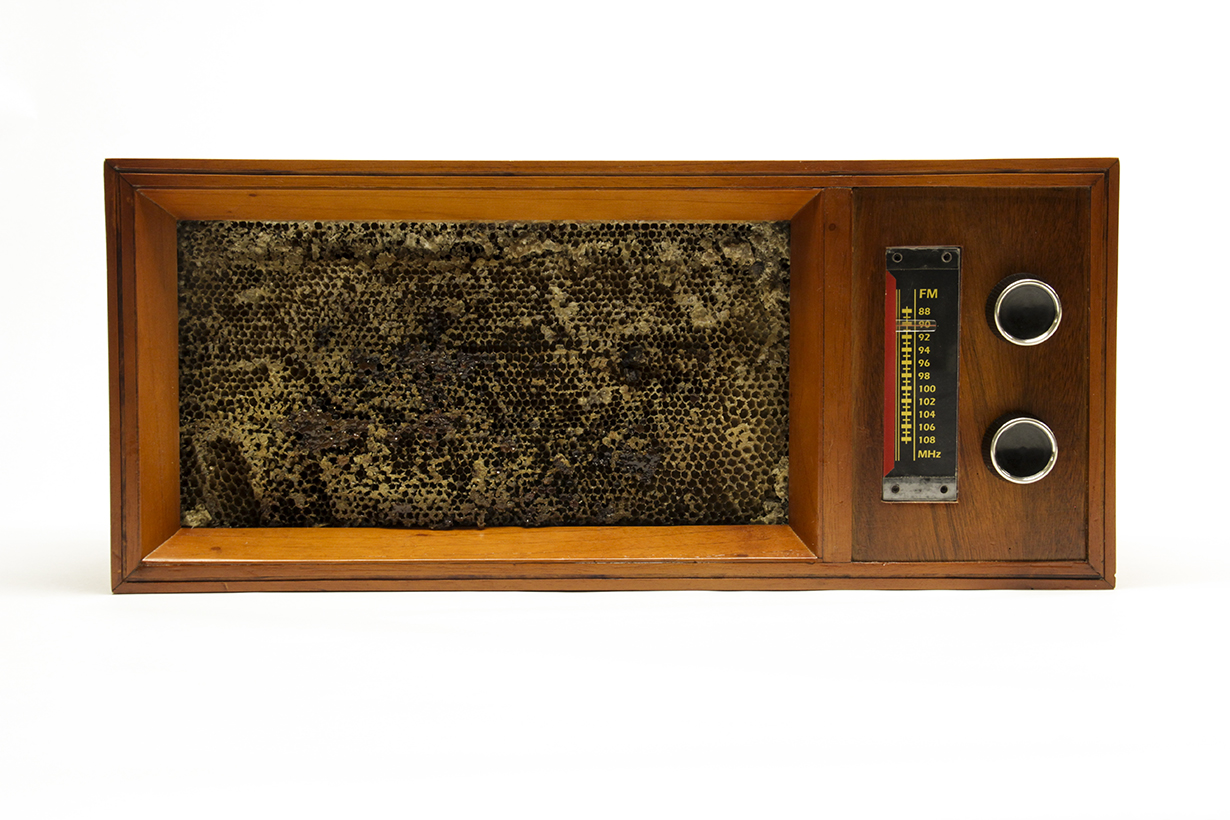
2018
Radio assembly, honeycomb and radial interference
65 x 22 x 28 cm.

2018
Radio assembly, honeycomb and radial interference
65 x 22 x 28 cm.

Dial, 2018 from Sonnia Yepez on Vimeo.

DIAL
Radio assembly, honeycomb and radial interference
65 x 22 x 28 cm.
“[If there is no change of images, unexpected union of images, there is no imagination; there is no
imaginative action. If a present image does not suggest an absent image,
(…) there is no imagination.]”
Gastón Bachelard / El aire y los sueños
When standing in front of a Dial, despite being a silent piece, the first thing that appears is a sound,
and the noise is heard. The whole universe contained in an old radio meets the universe contained in
a beehive; the closeness of their shapes has propitiated this encounter and now together, merged
into one object, they bring the sounds of their own worlds.
A materic and objectual interference amplifies the noise and by doing this, shapes, sounds, and
universes intersect and alter on Dial to give life to an image or several.
Bachelard states that “[the poem is essentially an aspiration to new images 1 ]” and, with this in
mind, it could be said that Sonnia has created her best poem. In fact, her most complex, elaborated,
and accurate poem so far.
Sonnia invokes all the sound force of the bees’ flight by replacing the woofer of an antique radio
with a honeycomb. Moreover, with this simple action it also evokes a radial interference, a sound
that we barely hear anymore. A sound which is about to die (or already dead for many). Thus, these
two sounds emitted simultaneously by an old radio. Two buzzing sounds, lead to the question of
what comes with that buzzing? Well, through this noise one can bring to the present (and in
parallel) two specific stages of cultural and natural life; in other words, two precise historical
moments. Yet, what do these stages say? What can the dialogue between these two moments in
history point to today?
In the field of telecommunications, interference is the reciprocal action of signals that alter each
other by increasing, decreasing or cancelling the wave motion. In the midst of this interference that
Sonnia proposes with Dial, one could think about what was, what still survives, and what may be
endangered. Additionally, no one is able to ignore a buzz when it is prolonged or intensified as it
could become annoying, irritating, and unbearable. It is not a matter of listening to a clear nor
pleasant sound, but of making an effort to comprehend in the middle of that interference. Then, an
attempt must be made to see what Dial intends to show while listening.
Carolina López Jiménez
www.letraypalabra.wordpress.com
1Bachelard, G. (1993) El aire y los sueños. Fondo de Cultura Económica. Bogotá. p.10.